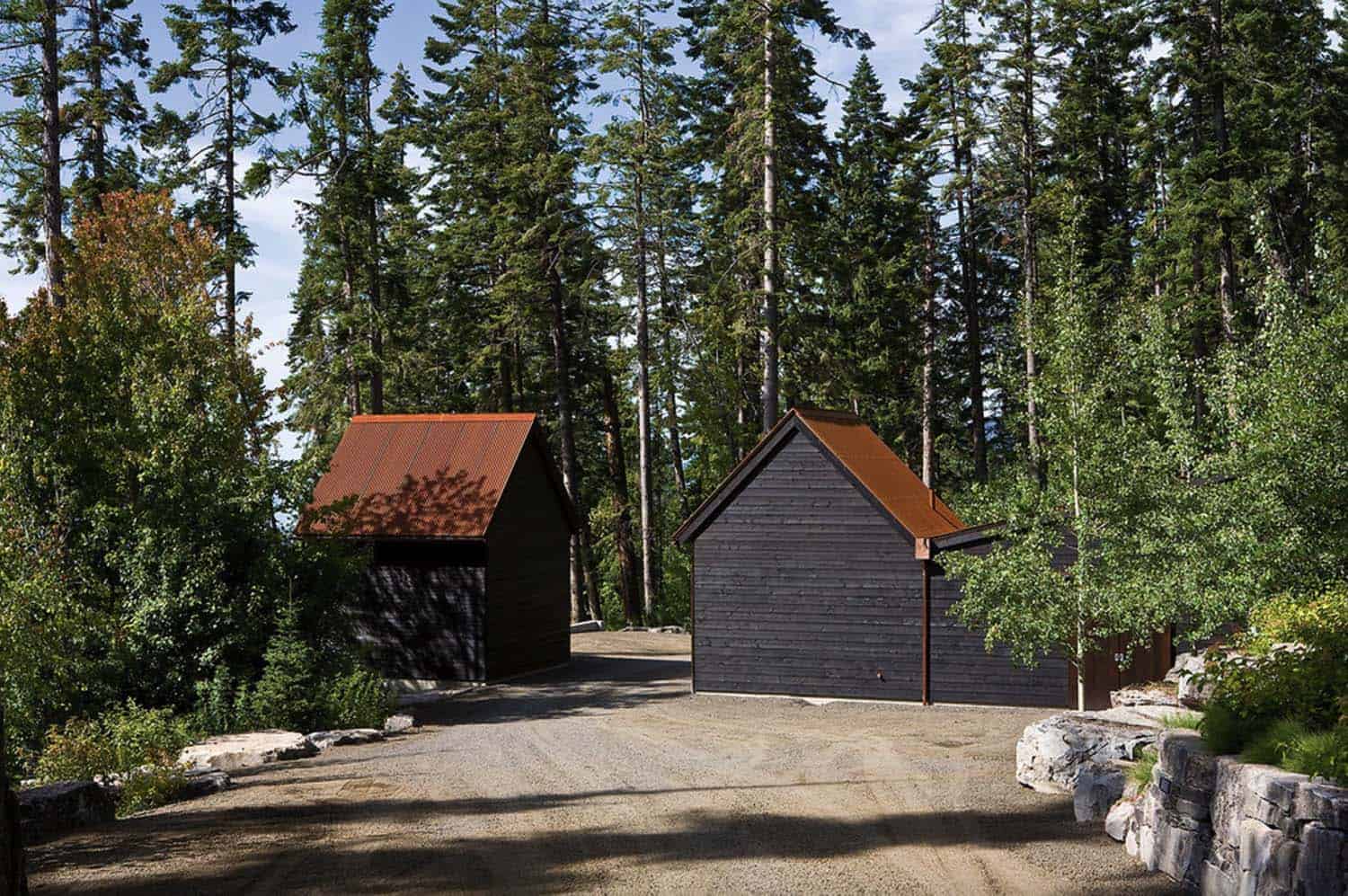
This rustic cabin hideaway was designed by Andersson-Wise Architects as an all-season family retreat, located on Flathead Lake in Big Fork, Montana. This camp-like property was created for a couple to enjoy with their kids and grandkids. Designing this private compound getaway in northern Montana was an exercise in bringing natural light into buildings and their surrounding spaces. The result is four structures nestled along a hillside, which leads guests to gradually discover the site — and beyond to a boat dock at the water’s edge.
From the two gatehouses (above), a pebble and earth pathway meanders down the hillside to the main house, lodge and the guest house. The architect devised this property without a HVAC system, instead he integrated an insulation method that involved stacked cordwood. This enables the dwelling to harness heat from radiant floor heating and several well placed wood burning fireplaces.
When the homeowner’s (both are in real estate) initially purchased this property, there was only a 10×15-foot cabin on the site — constructed in 1920. They requested that the architect build individual structures on the site to not only give a camp-like feel, but to allow for privacy for family members. The concept was to construct convertible spaces that could be opened up during the warmer months and be shut down during the winter to lock in the heat.
Above: Most of the buildings are clad in Douglas fir and stained in a creosote (greenish-brown) color to make the structures appear like shadows in the forest. The idea was to mimic the shadows that are produced by the large pine trees that are found on the property.
What We Love: This rustic cabin hideaway demonstrates a wonderful use of innovative design that harmonizes with the natural environment. The workmanship of the stonework and of the intricately stacked logs is just amazing. We are just loving the idea of a camp for a vacation house. A place where you can truly escape and become immersed in your own world… and that water view from the dock, who would ever want to leave?! …Readers, what do you think of the concept of this cabin-like retreat? Tell us in the Comments below!
Above: Native grasses on the roof of the main house not only helps for insulation but to blend the home into its surroundings. A minimal material palette of wood and stone was used to construct the buildings. The idea was for the home to appear like a piece of art set within the context of the landscape. The architect was inspired by environmental artist Andy Goldsworthy for this design.
Above: A portion of this wall is a steel framed window that can hold firewood during the winter. As the wood dwindles down, more of the window is exposed, drawing in natural light.
Above: This screened-in sleeping porch connects to the main house. It stays warm with the wood-burning stove and can be quiet peaceful for sleeping with the sounds of the water lapping against the shores of Flathead Lake.
Above: A Lift & Slide custom door system from Quantum Windows connects the living room to the outdoor deck of the main house.
Above: A steel framing system holds cordwood (a natural building method where short logs are piled crosswise to construct a wall, using mortar to secure them; this technique uses local materials with minimal cost) from diseased wood found on the property —ponderosa pine, grand fir and Douglas fir. The wood was kiln-dried and cleaned, used as exposed insulation over double-thick masonry walls, which includes a moisture barrier.
Above: A staircase leads to the green roof where the family can have a picnic. There are no residential building codes in Montana, so the homeowners will use the staircase and rooftop sanctuary at their own risk.
Above: An outdoor shower off the master bathroom can be enjoyed during the warm summer months.
Above: The guest house features a massive sliding barn door that can be opened or closed, weather contingent.
Above: In the communal dining room of the lodge, there is a steel wheel on the wall that works as a pulley system. When activated, a glass wall is lowered, while a steel handrail gets elevated. This was devised as a way to create an indoor-outdoor connection but be able to close off spaces during the winter. There is another pulley system that lifts and lowers the chandelier over the dining table. The custom fixture has oil-burning lanterns that need to be lit and blown out during mealtime.
Above: The kitchen in the main house features blackened steel countertops. There is also a much larger kitchen in the lodge. Here, you can see the cordwood wall partitioning the kitchen from the master bedroom.
Above: A cozy sitting room in the guest house features a large stone clad fireplace for warmth. Barn doors behind the fireplace can slide shut to close this room off from the outdoors.
Above: A view from a screened-in sleeping porch in the guest house. From here you can see the lodge, which is connected to a kitchen to the left. On the right, the main house is nestled on the hillside.
Above: The lodge can be seen on the left, which was centrally positioned on the property. This is a communal space that encompasses a spacious dining room, outdoor living room and screened-in living room. There is a covered walkway that connects the lodge to the kitchen on the right, which has small space for eating.
Above: A pathway leads down from the cabins to the boat dock, which features a Classic Chris-Craft Wooden Boat.
Photos: Art Gray
Above: The architect conceptualized the house with a sketch and watercolors.

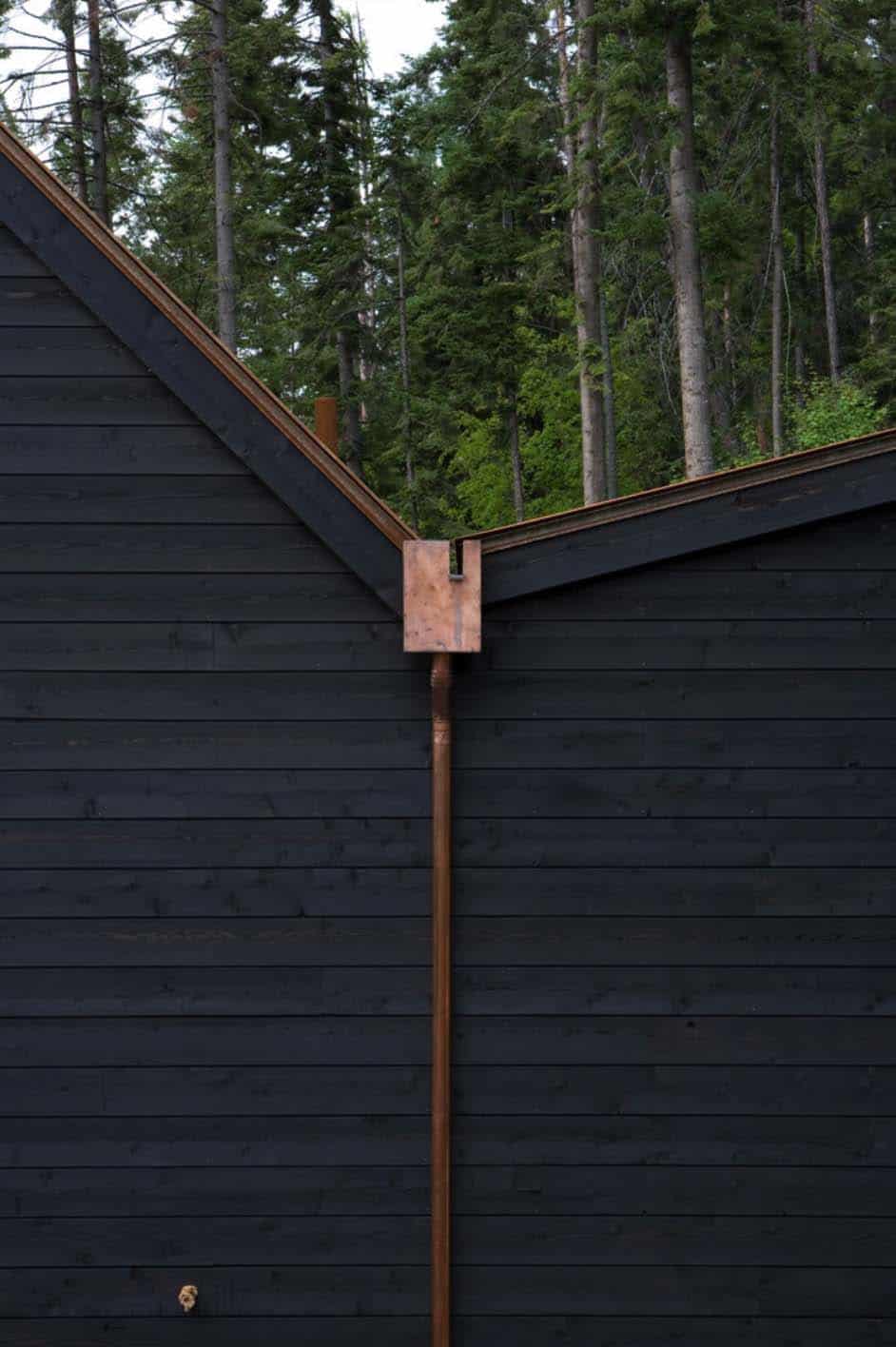

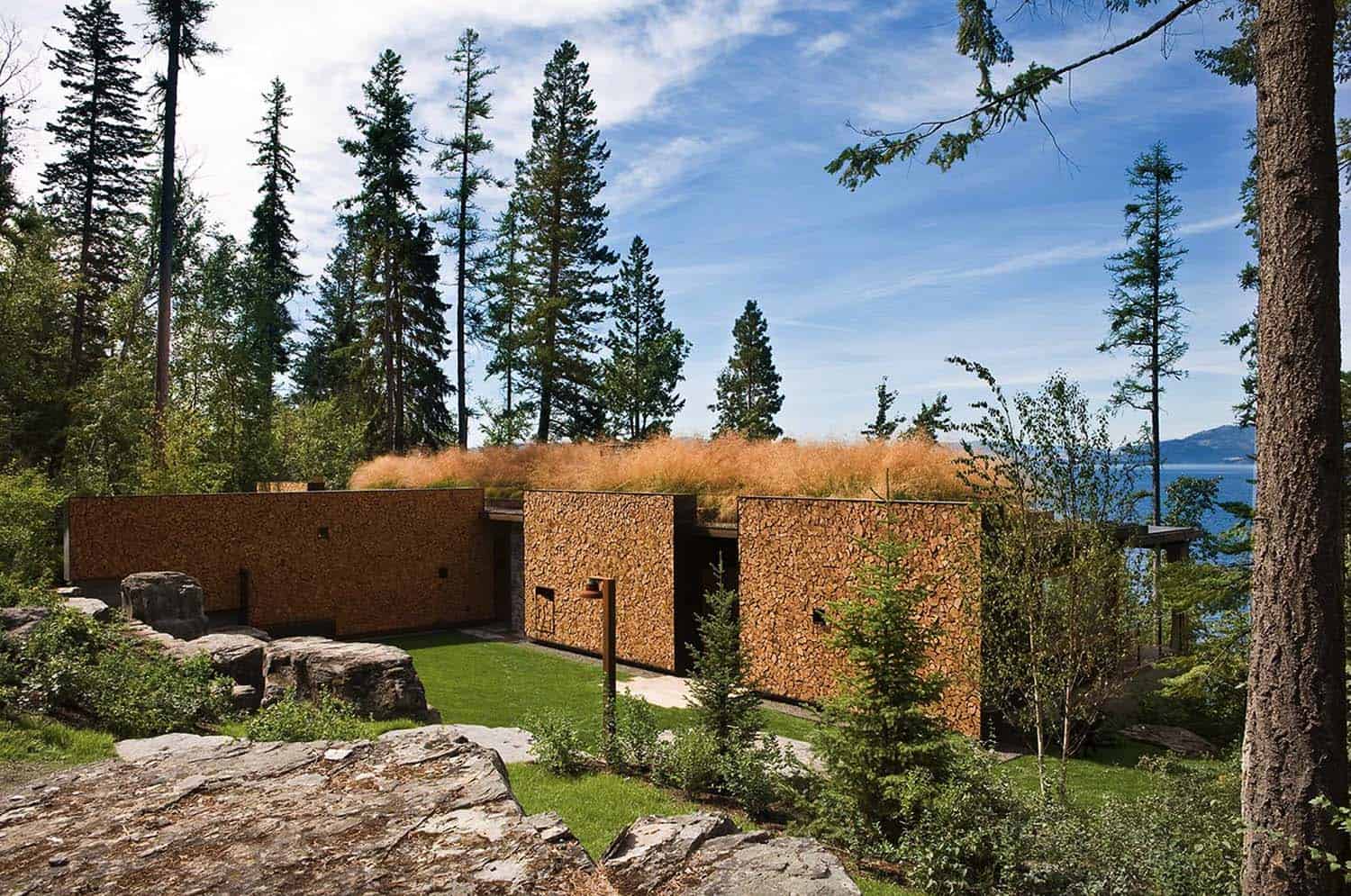
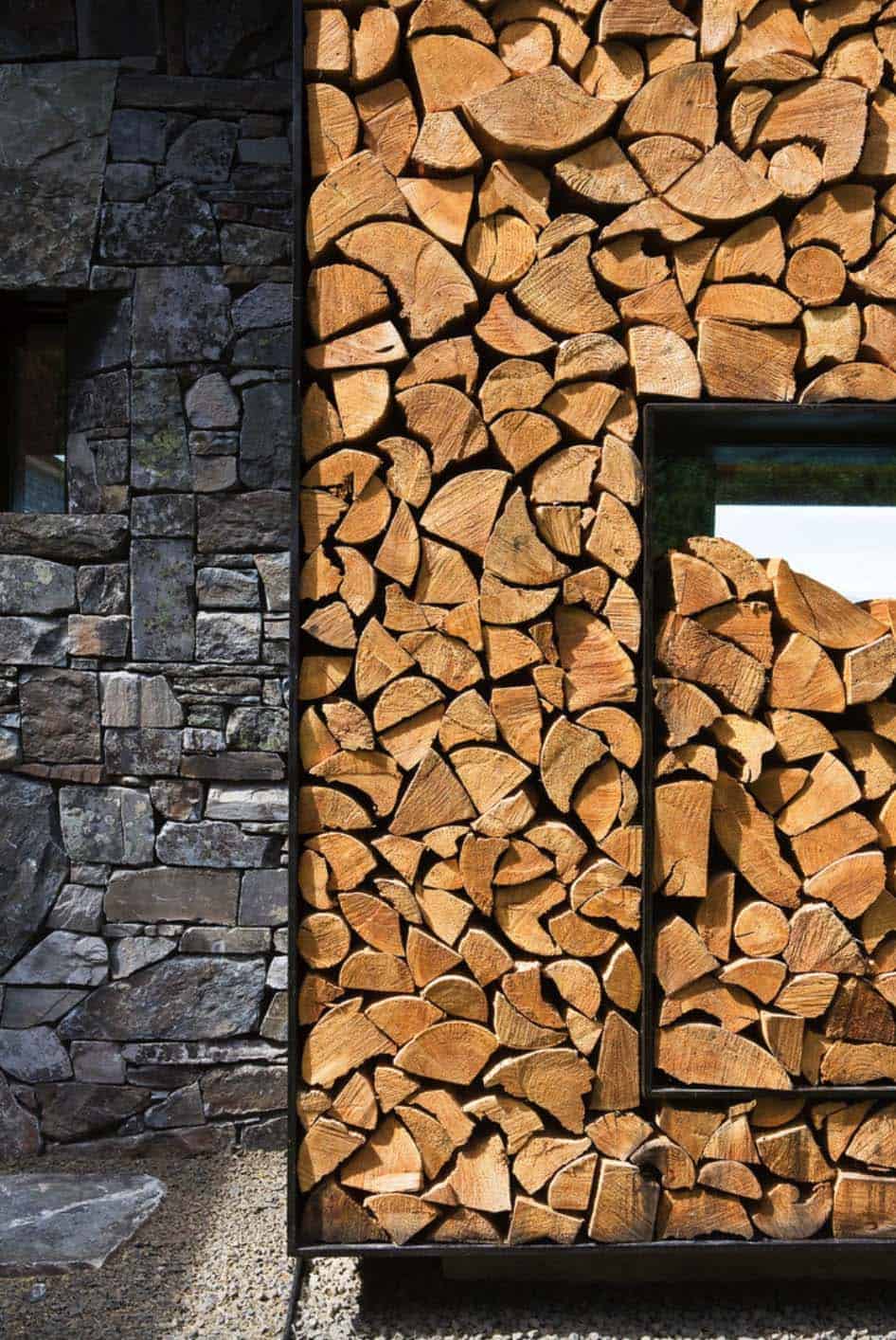
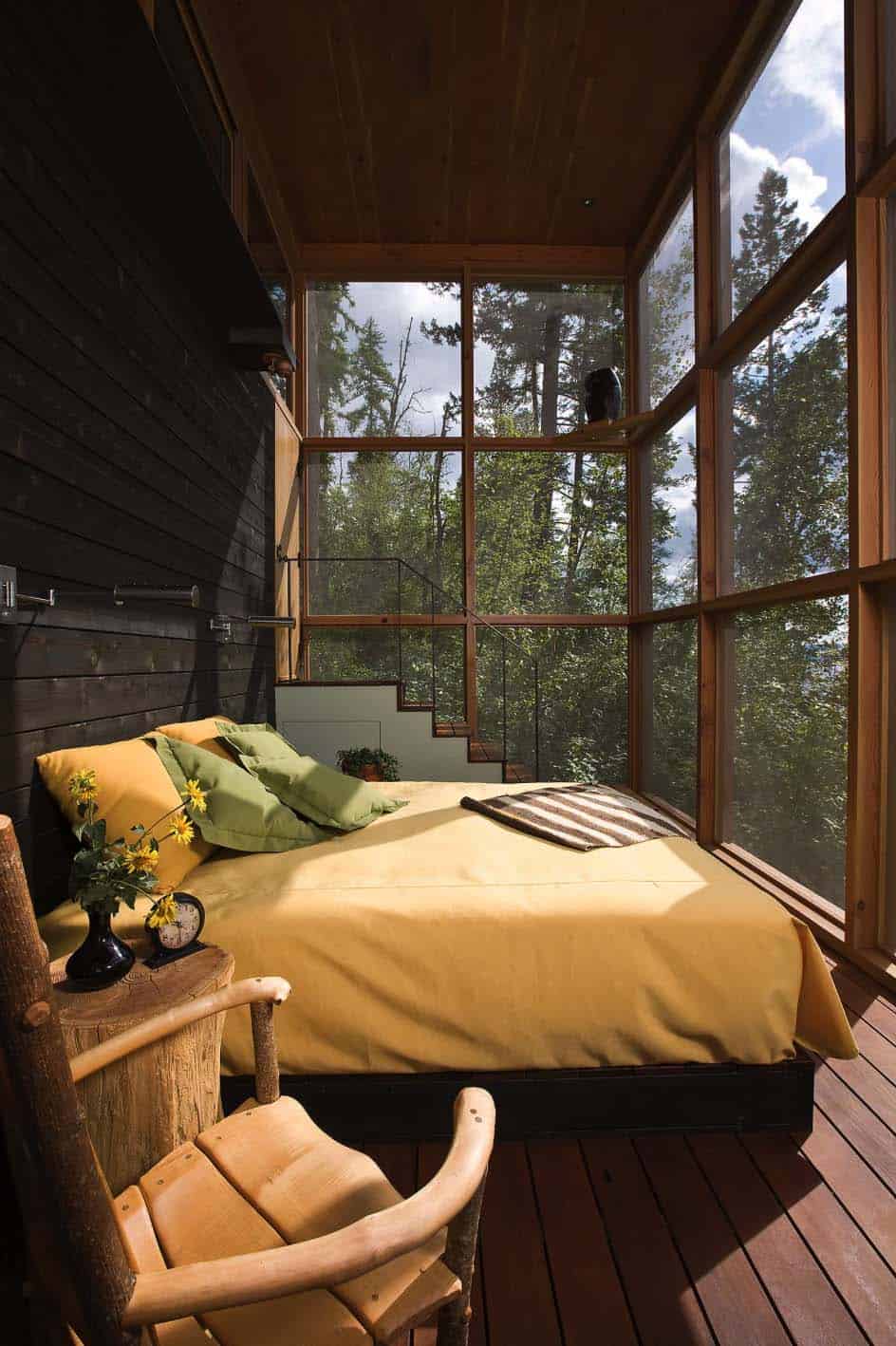
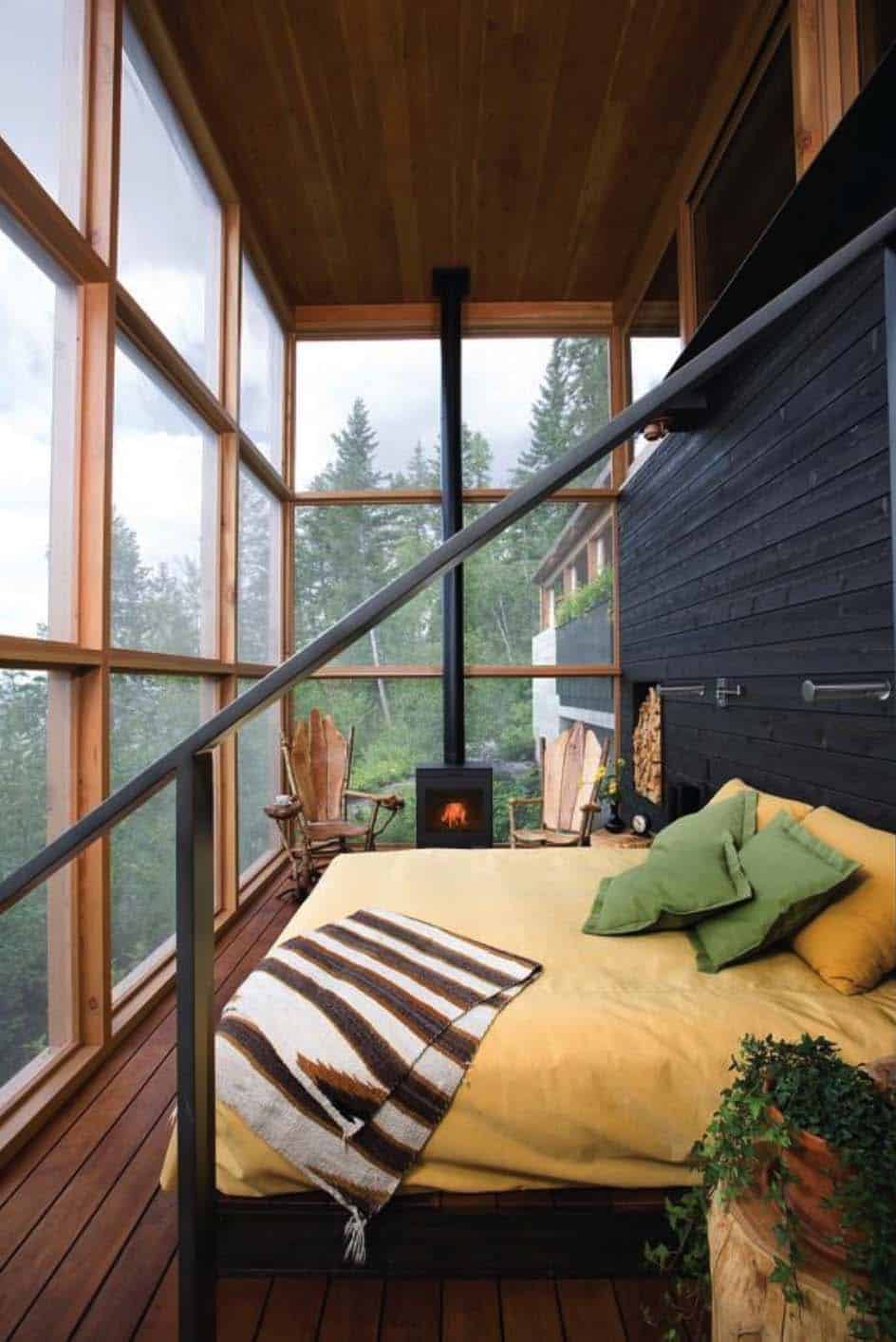
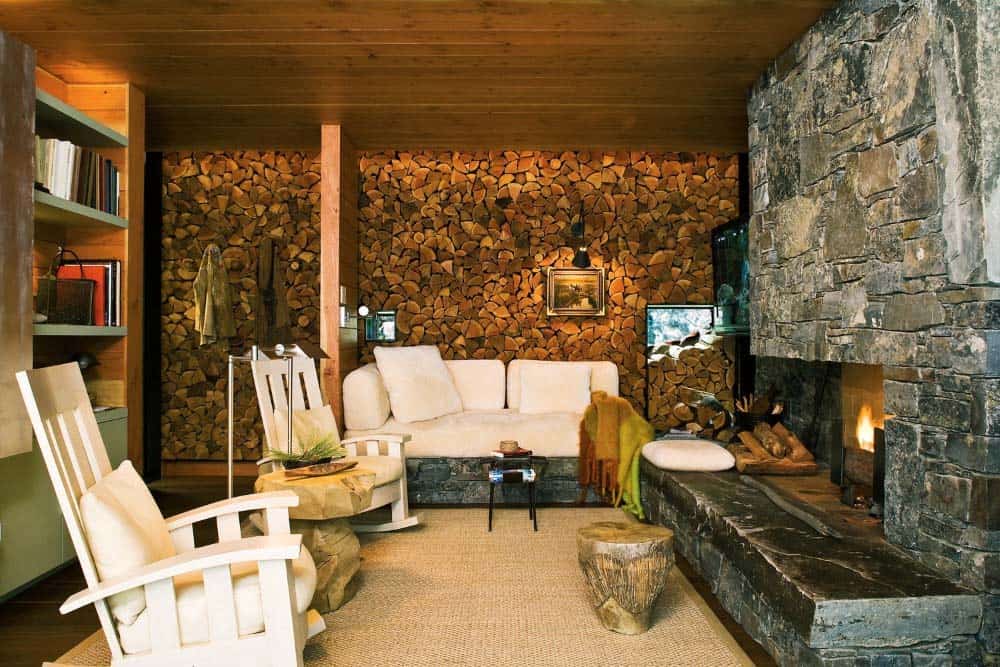
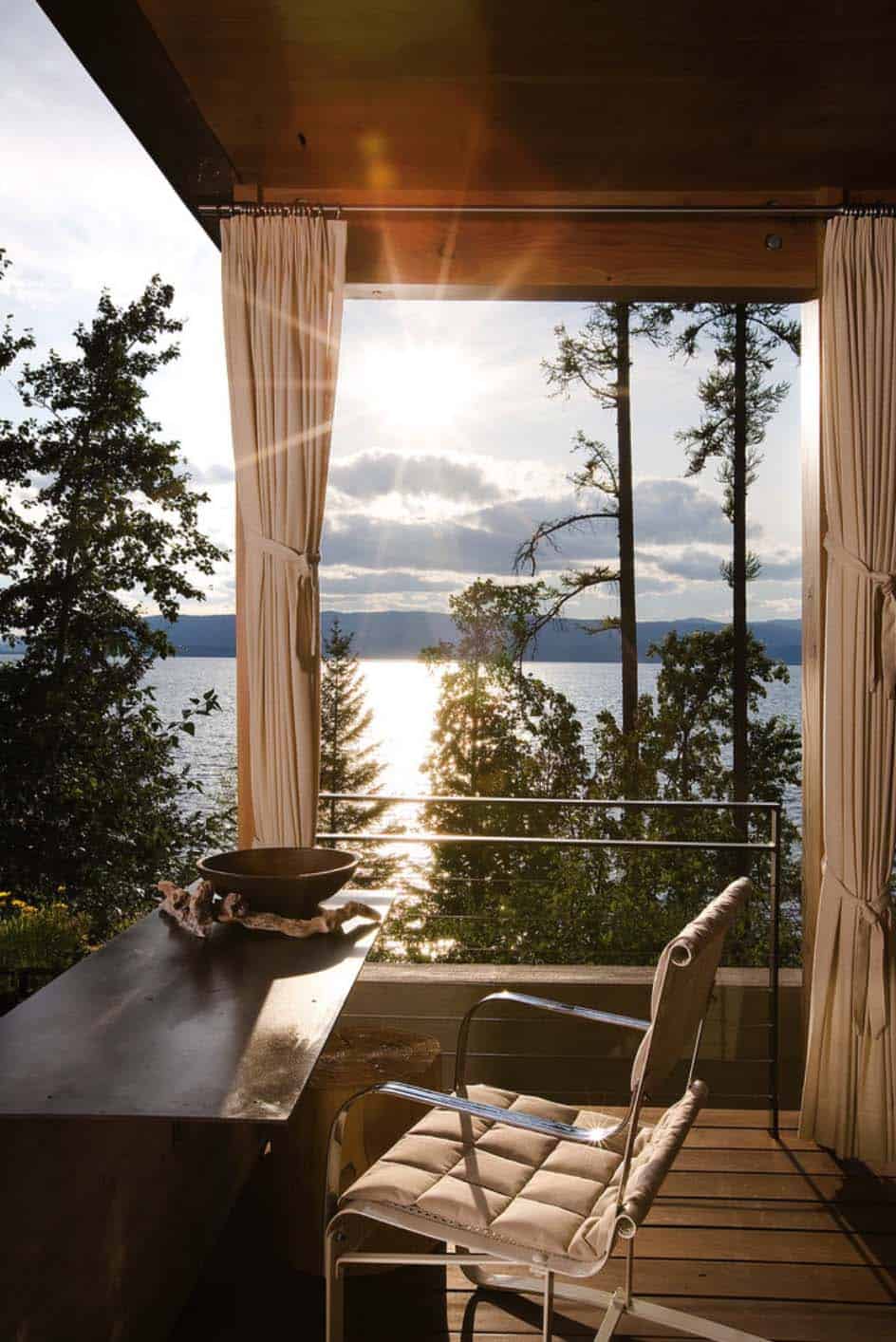
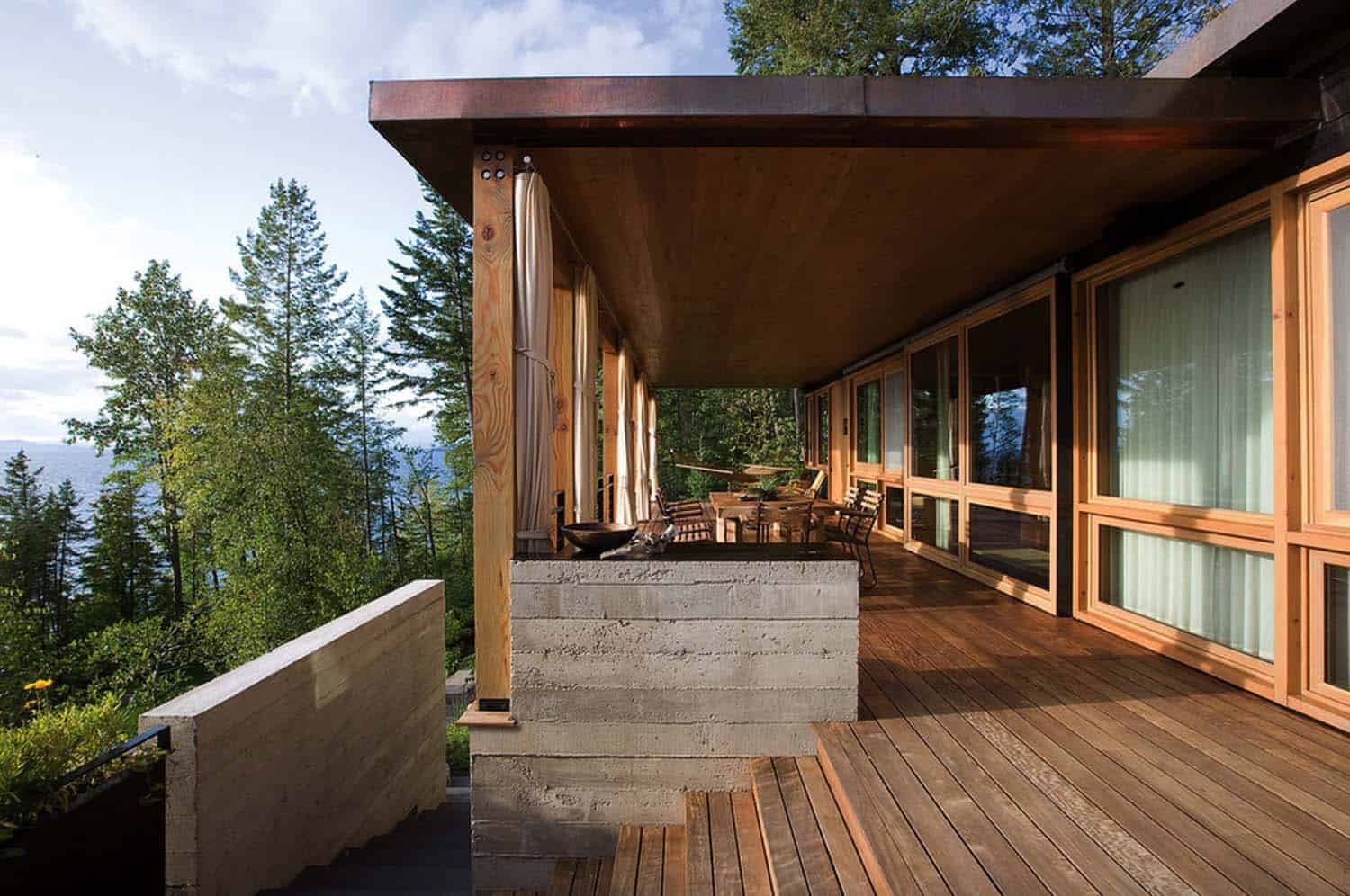

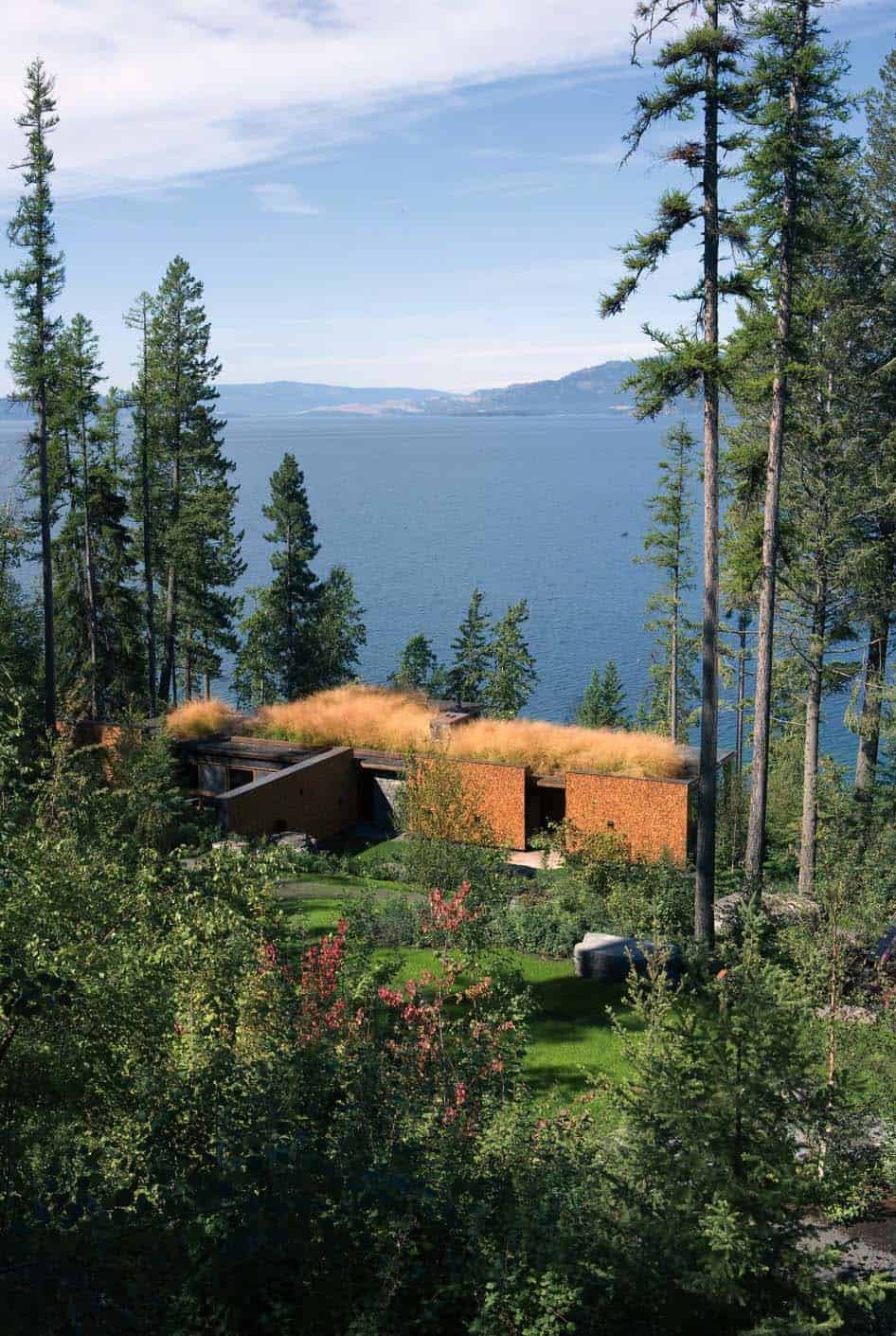
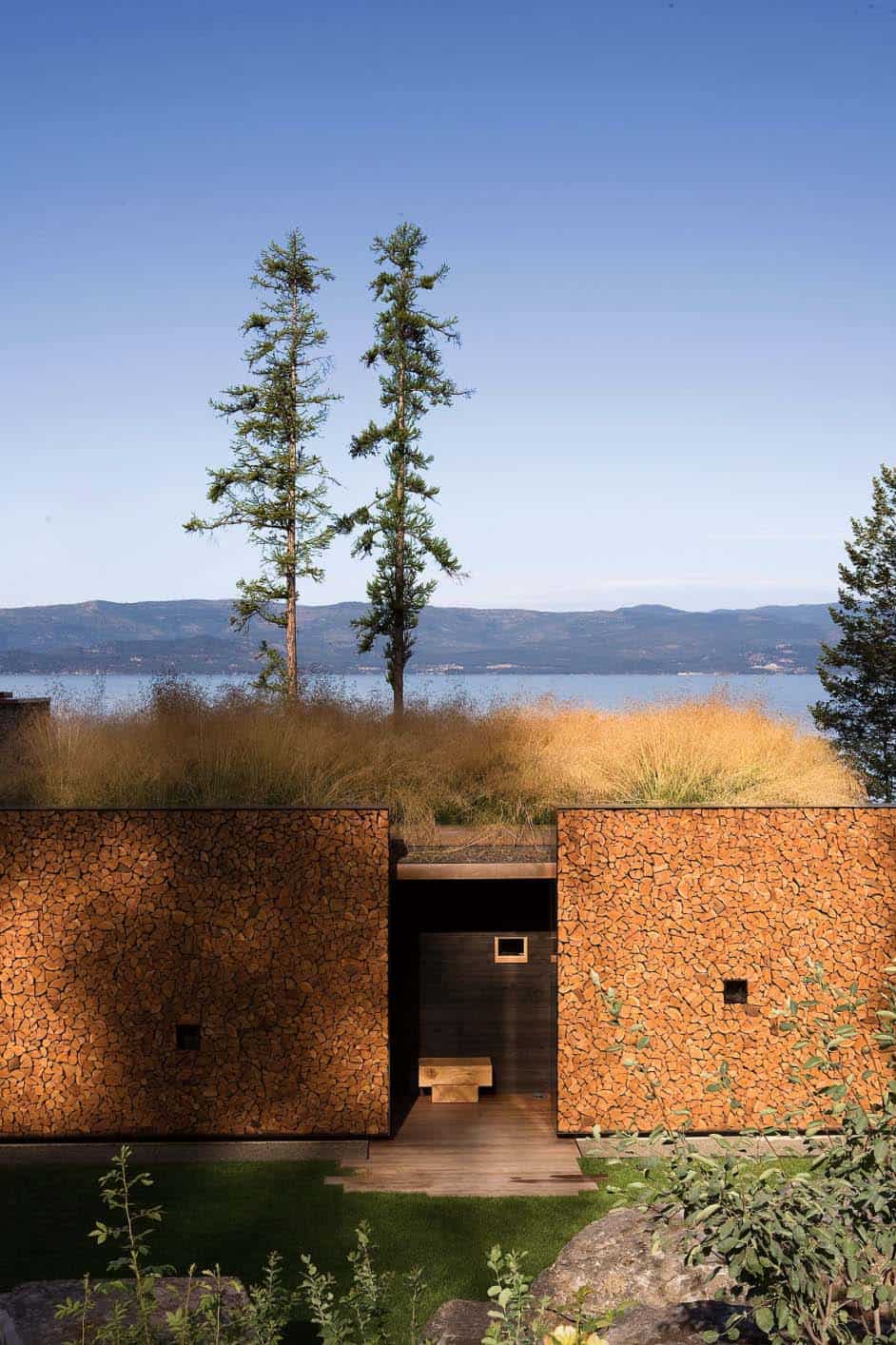
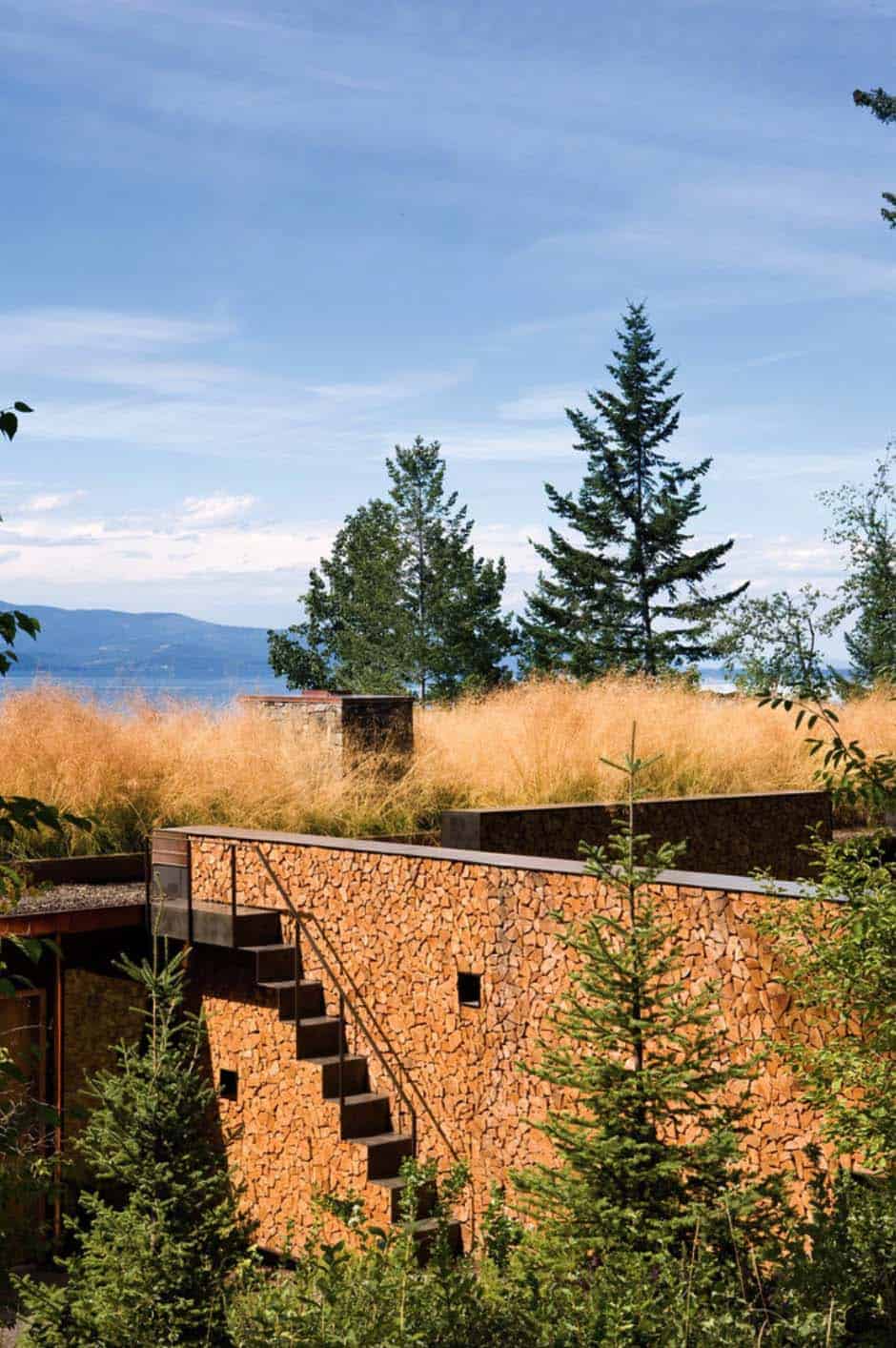
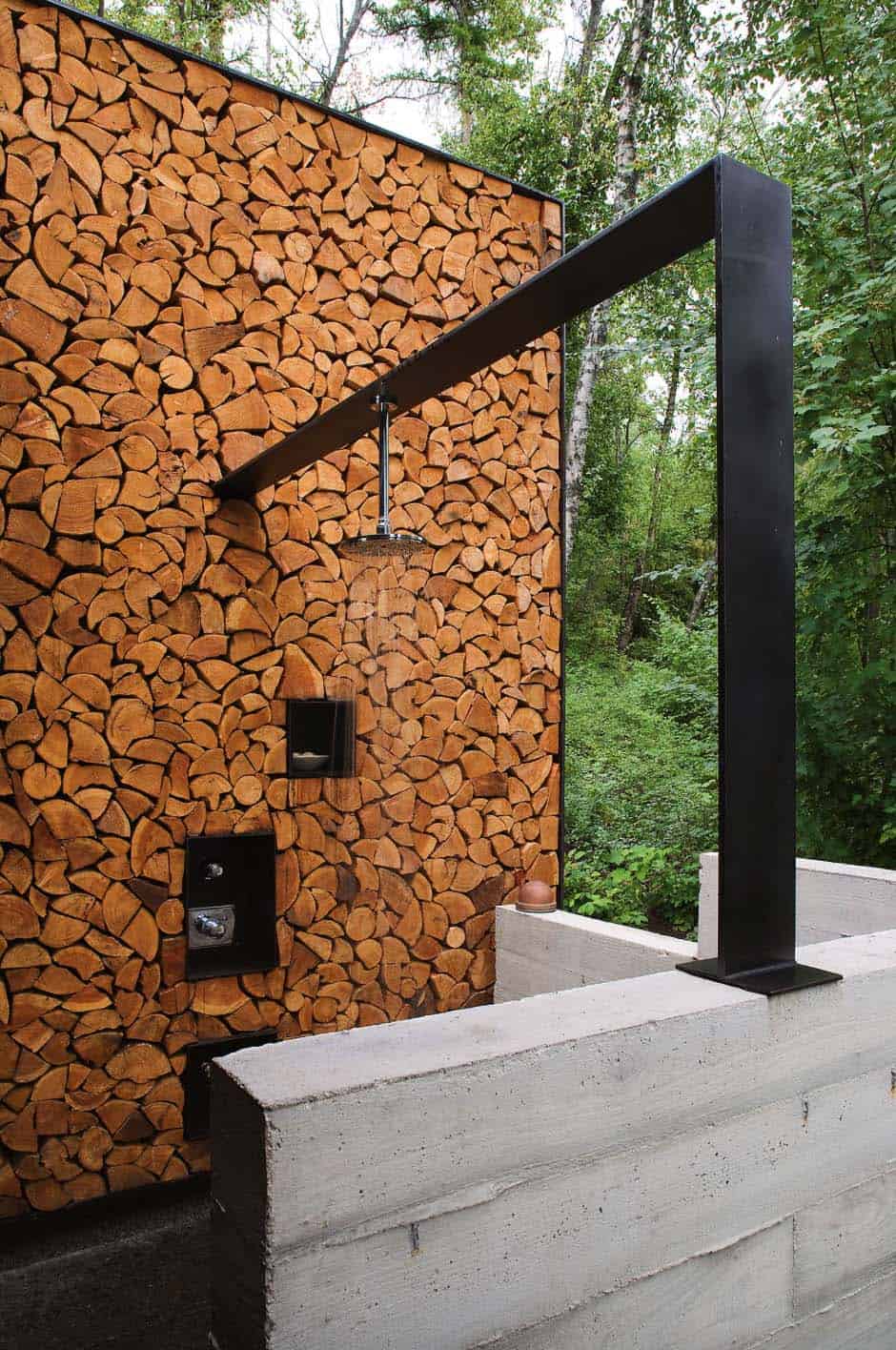
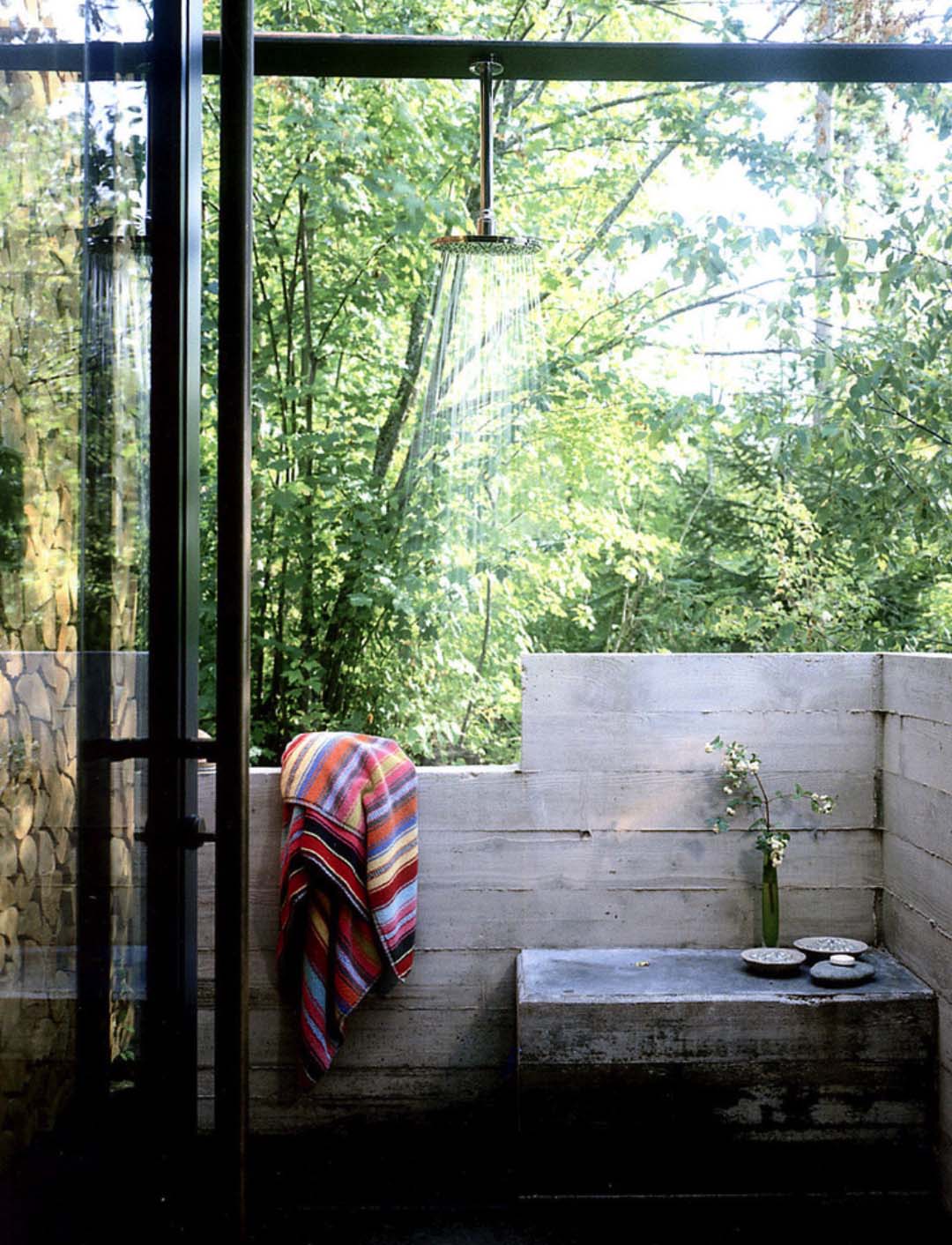
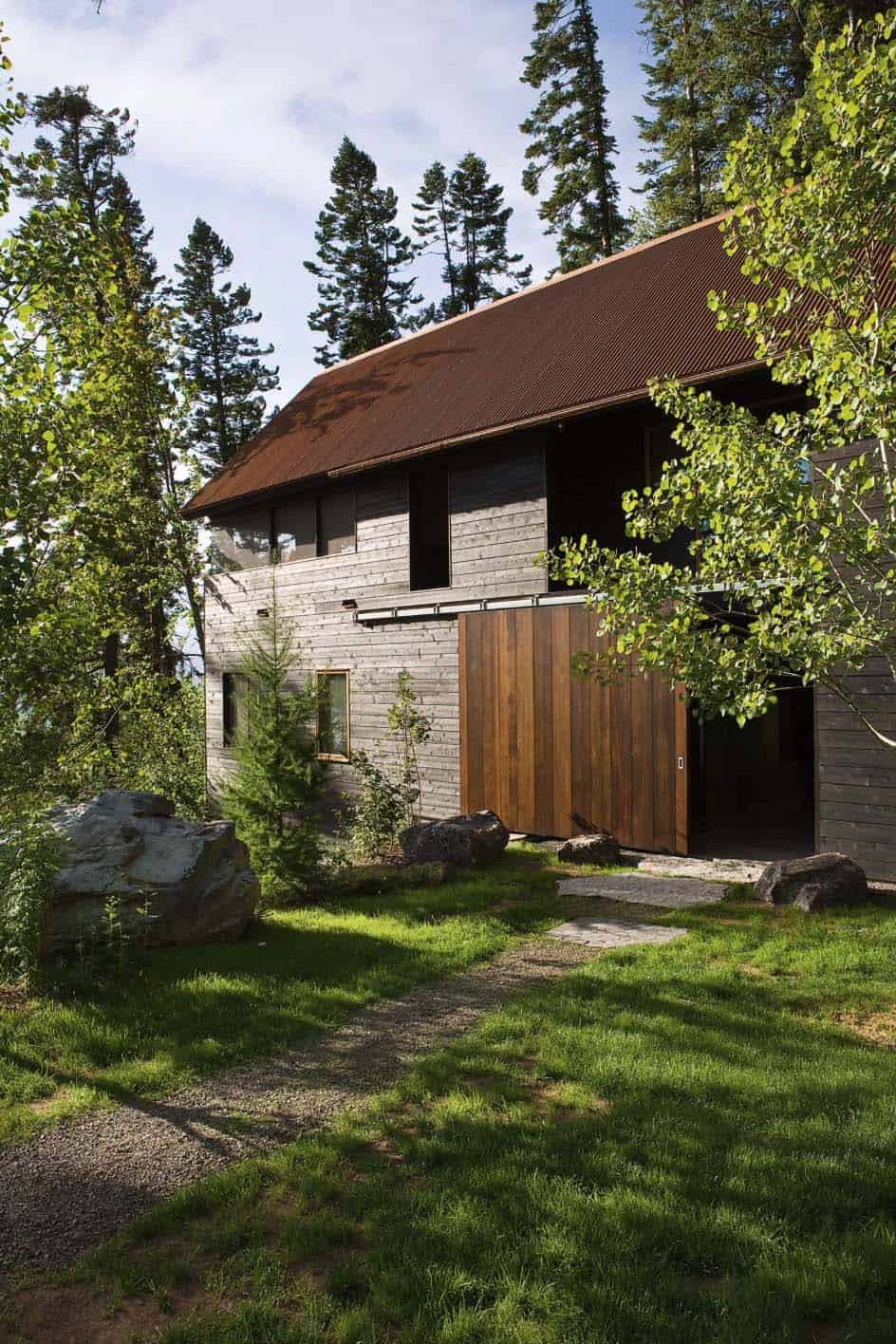
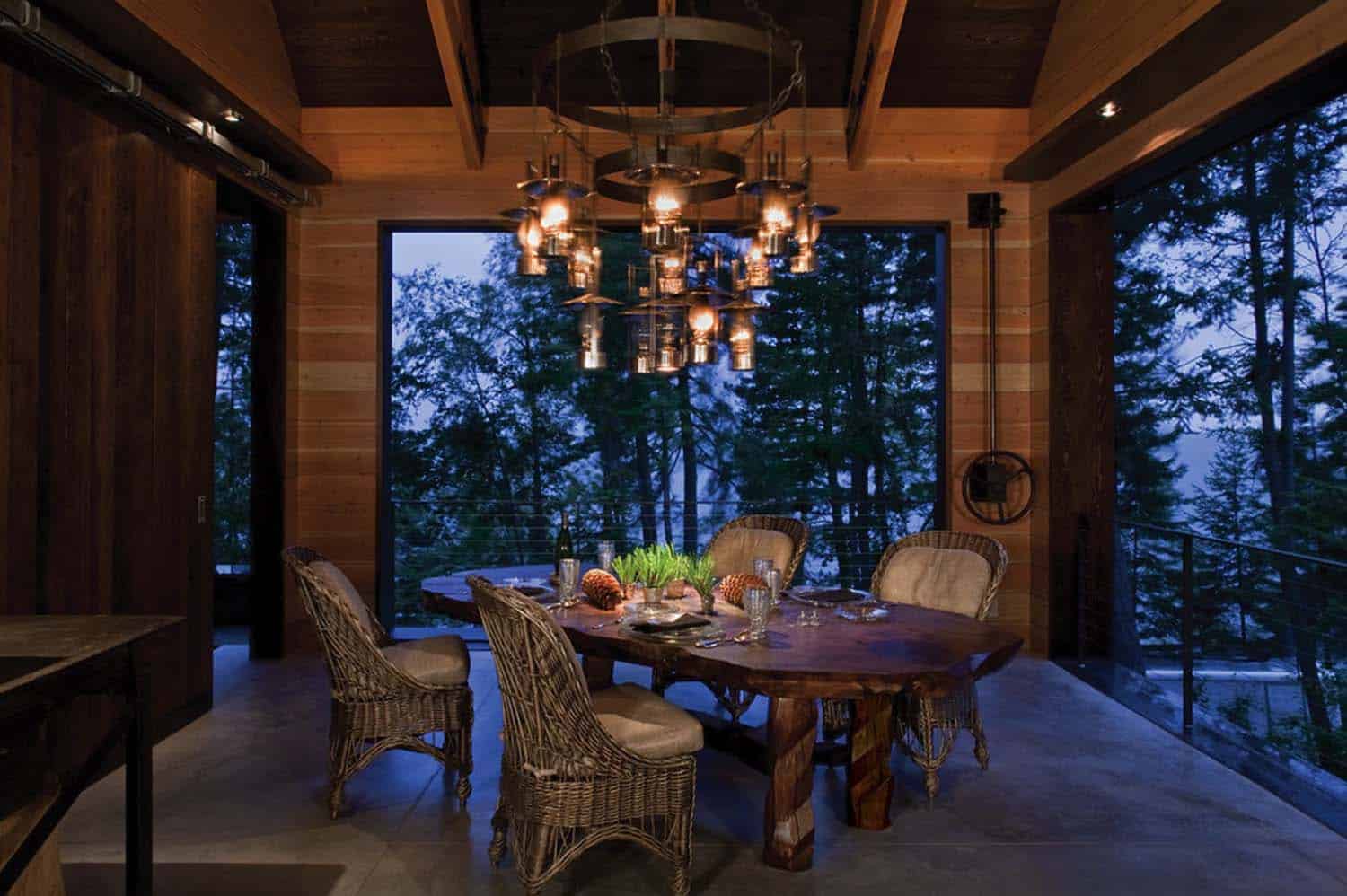
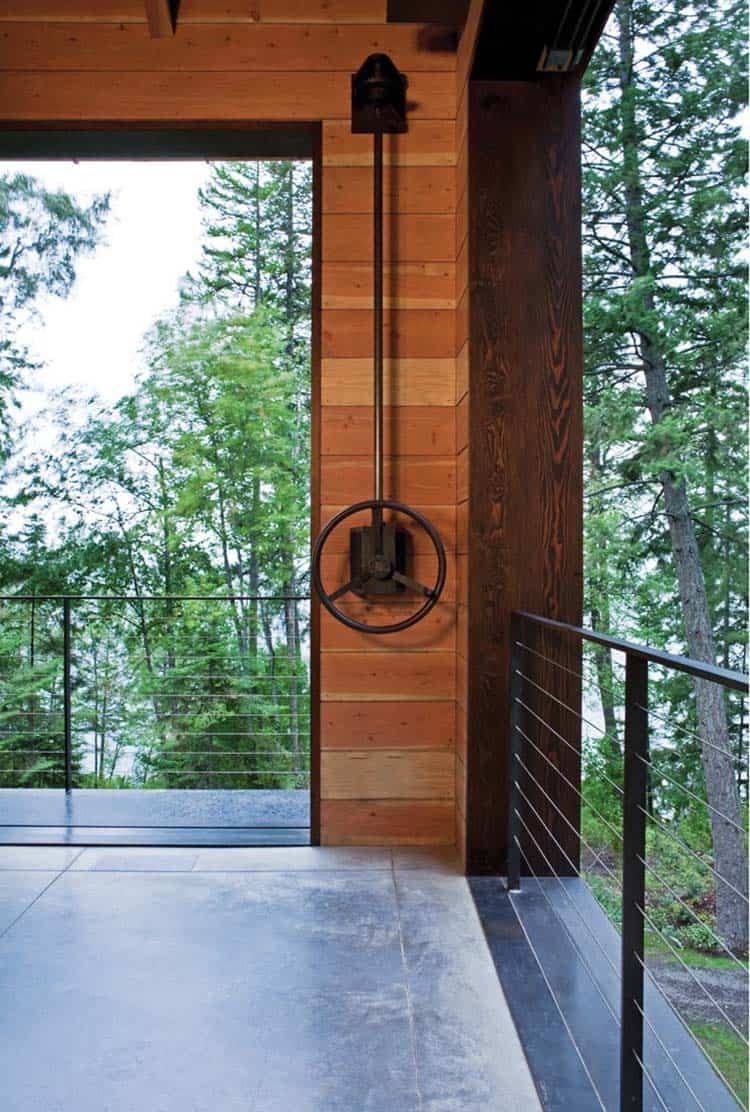
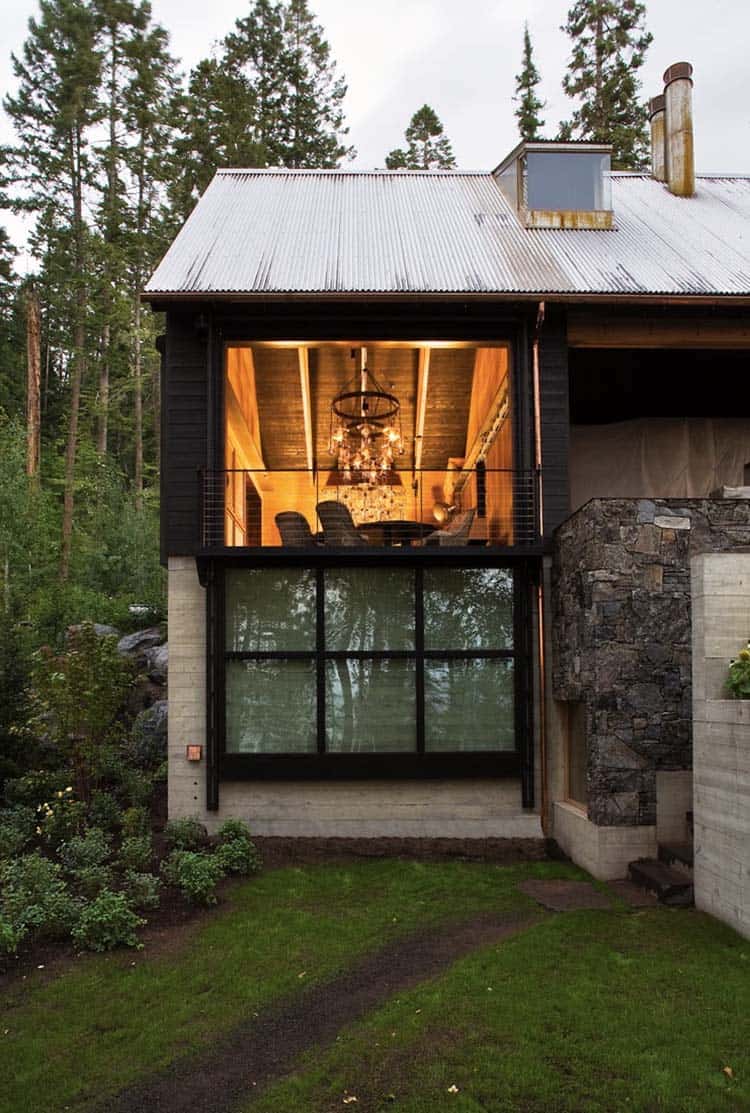
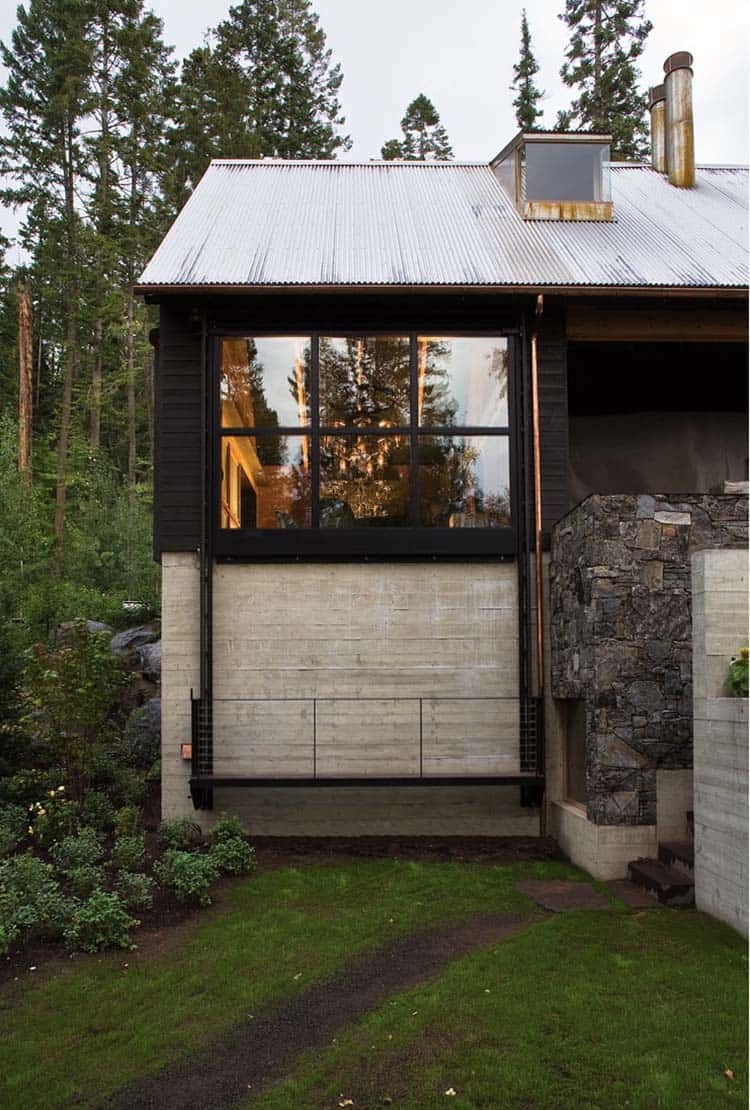
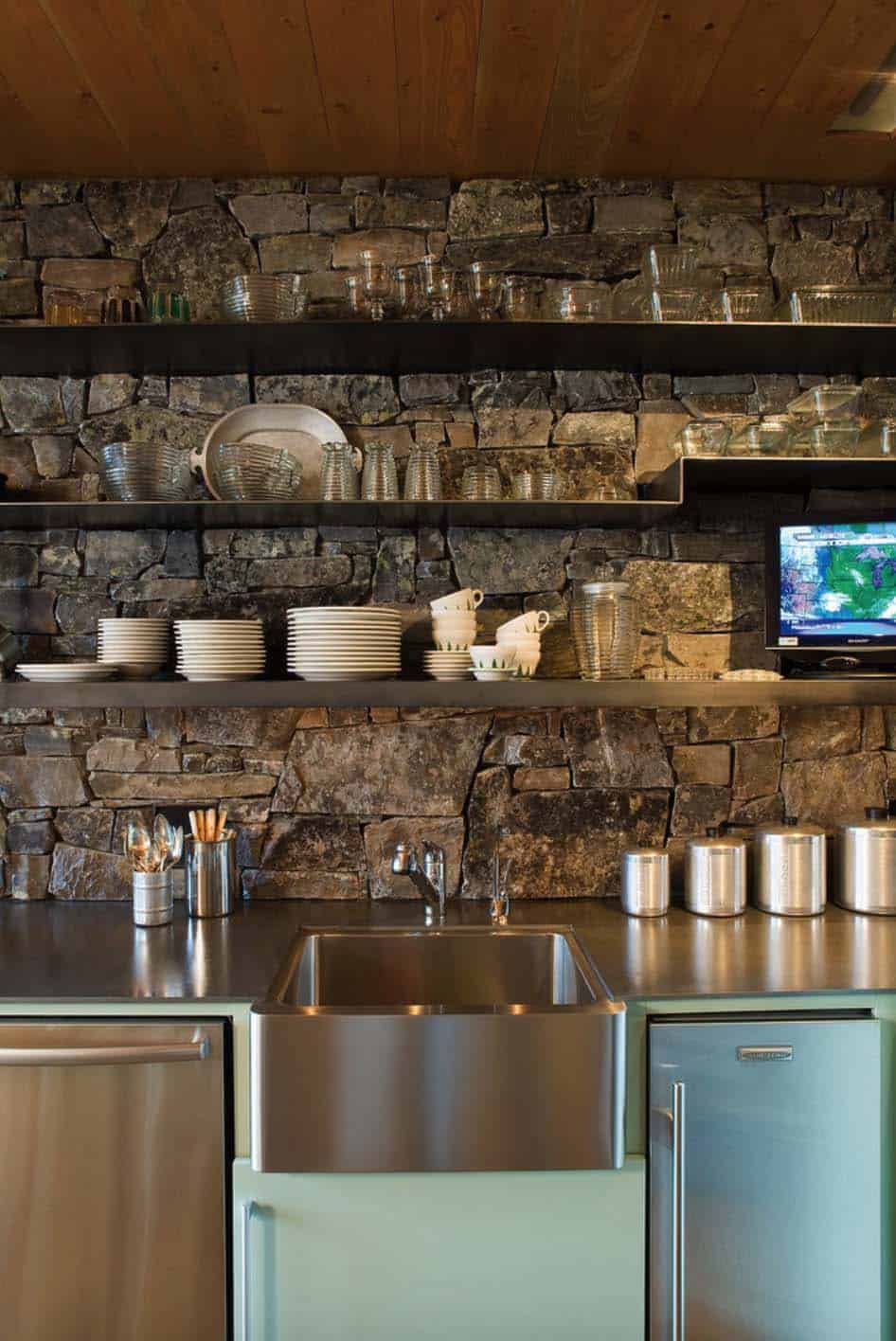

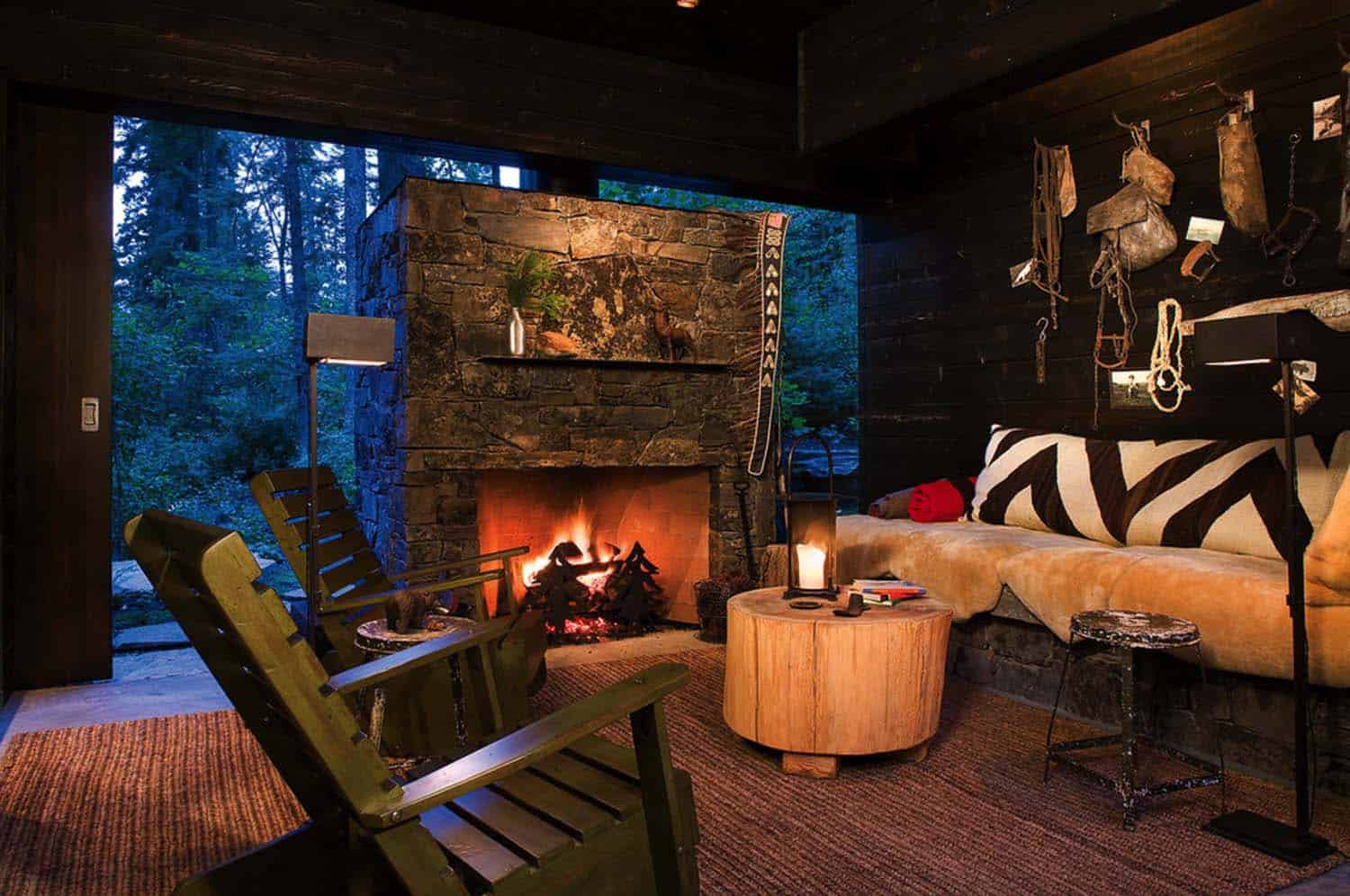

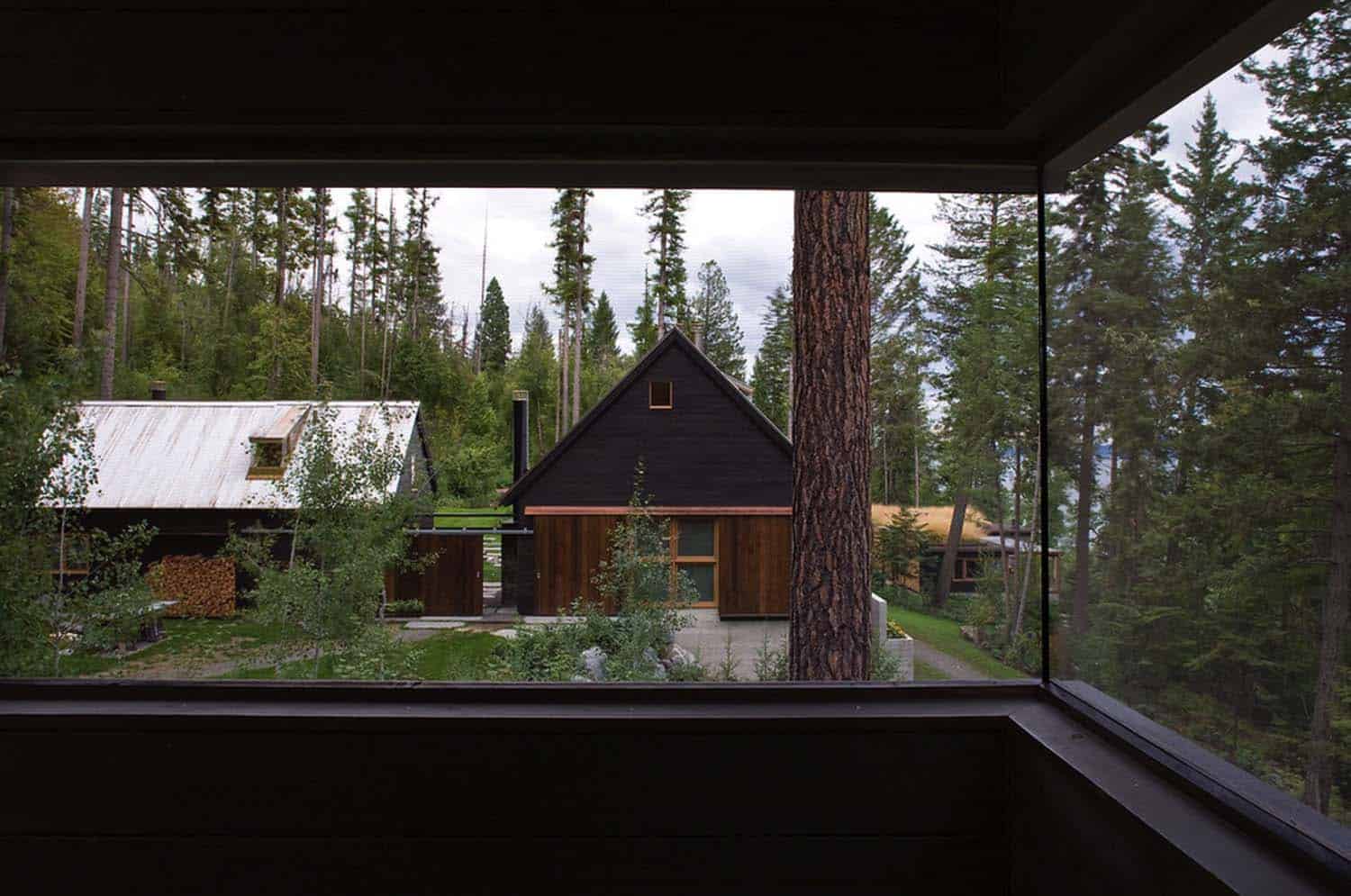
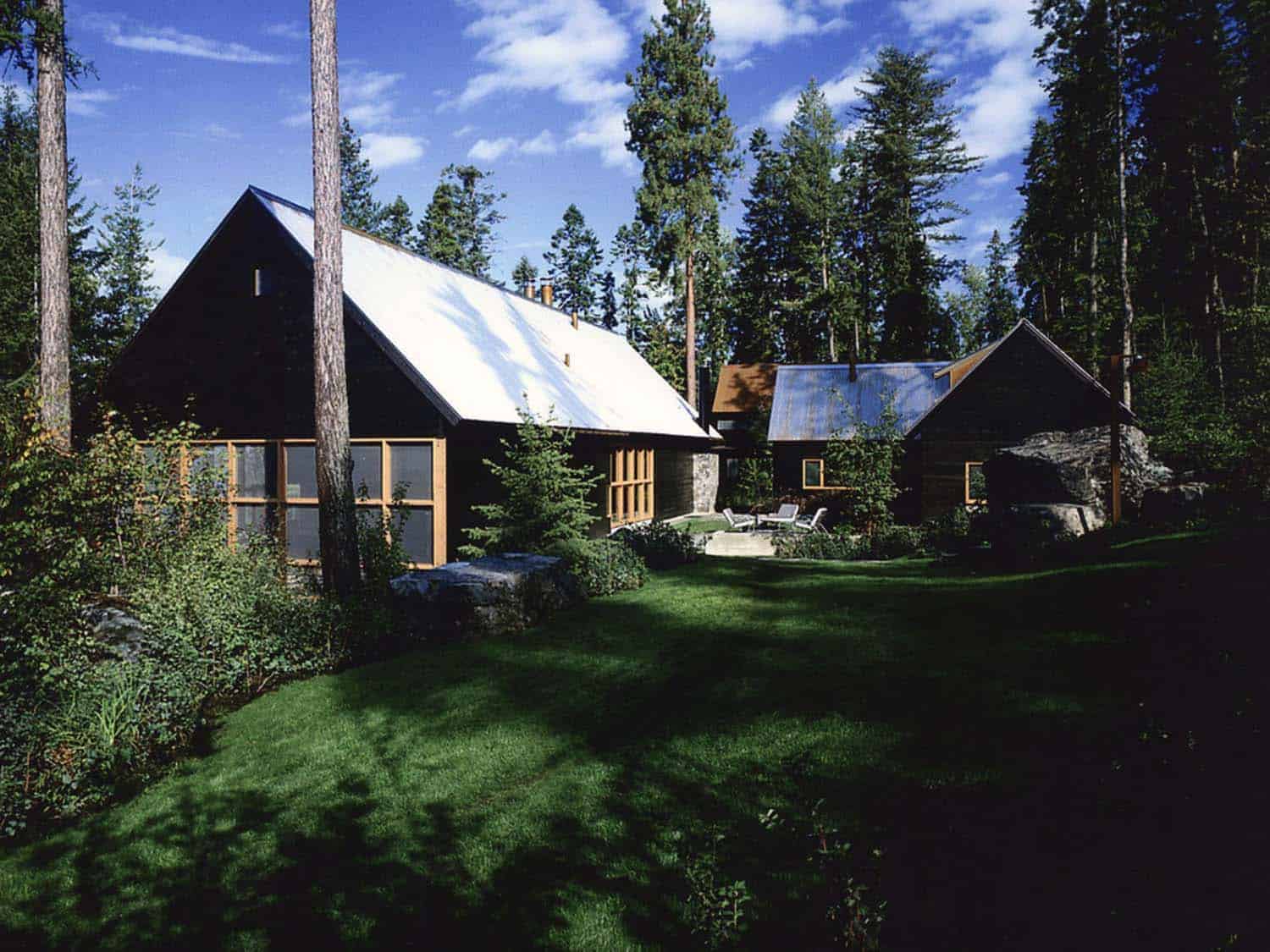

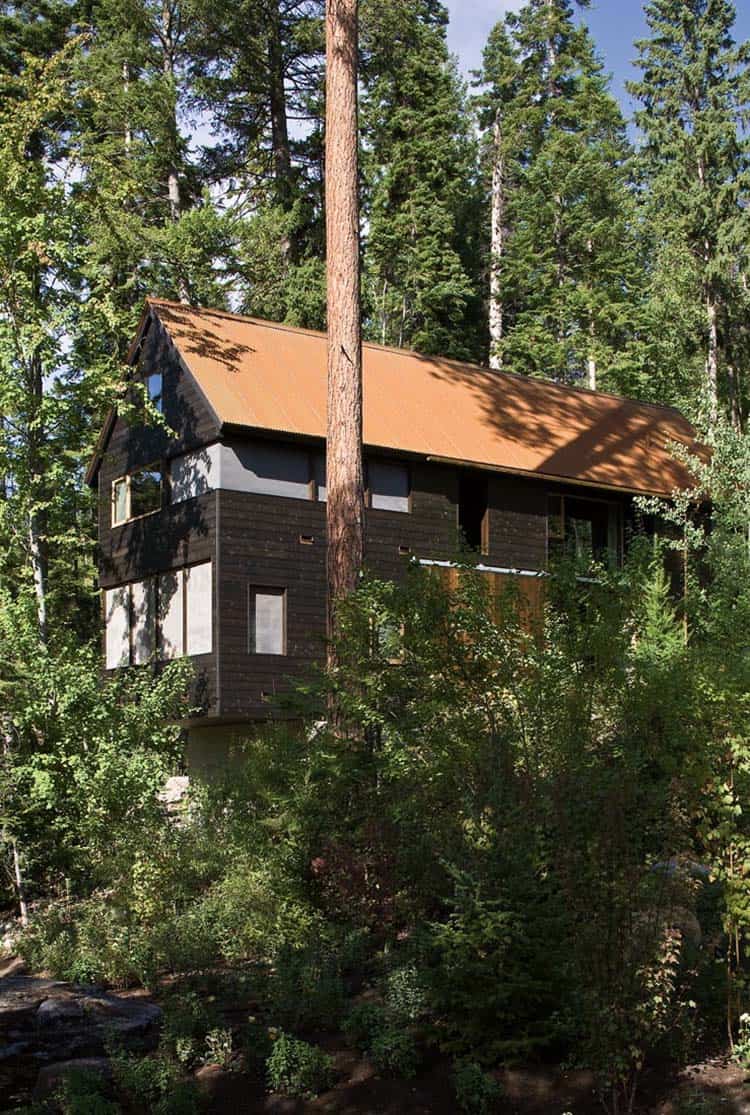

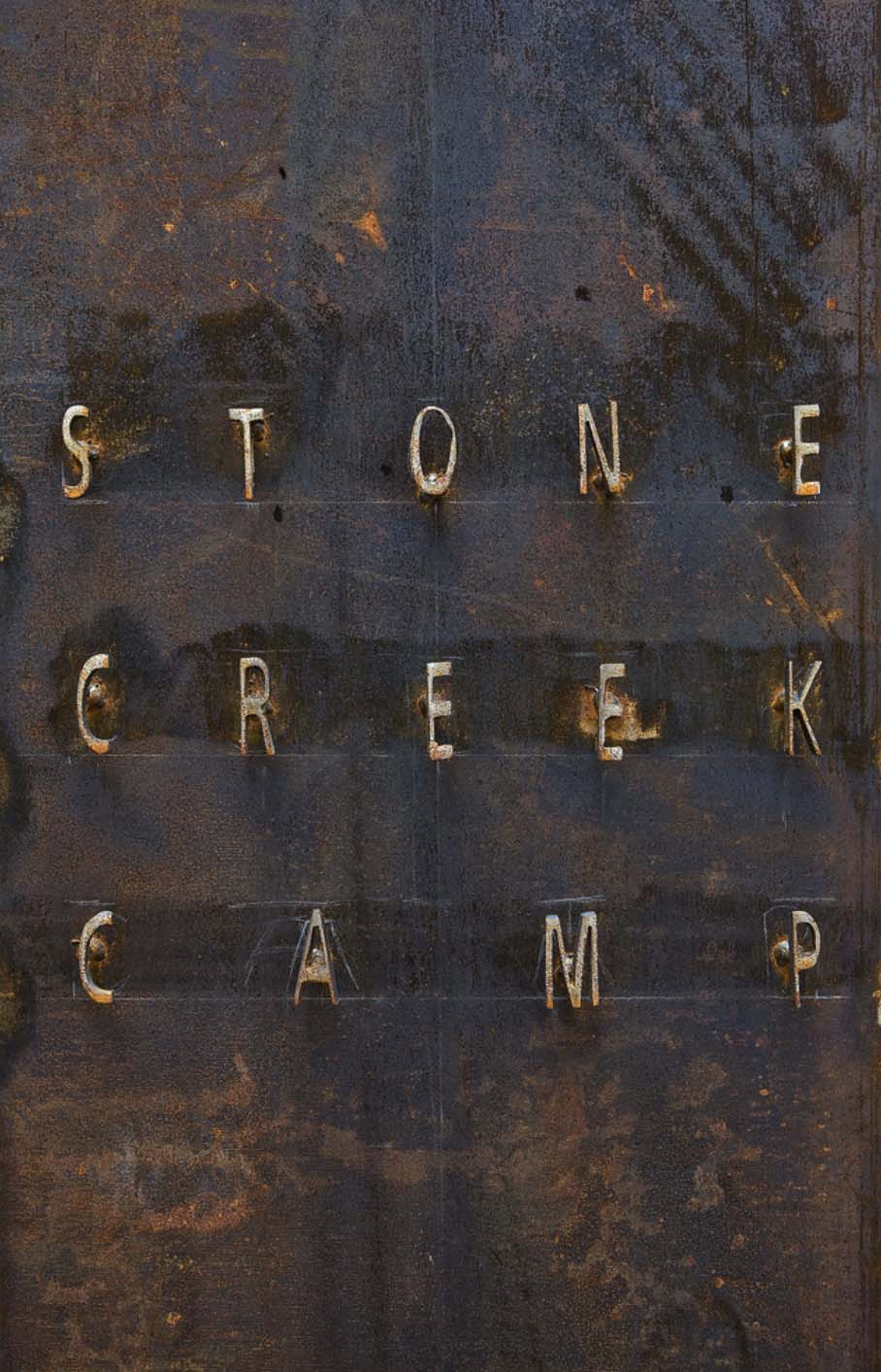

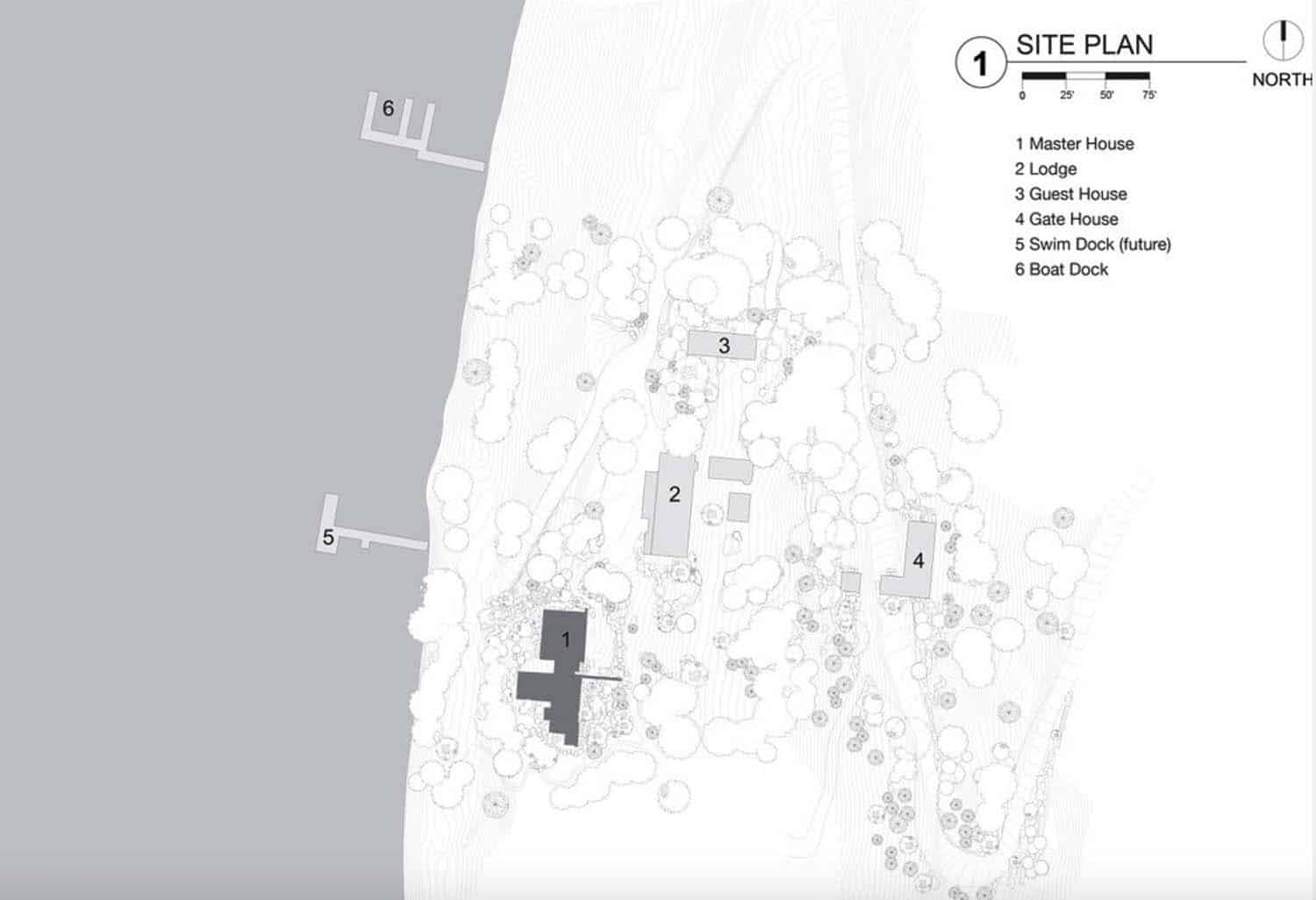
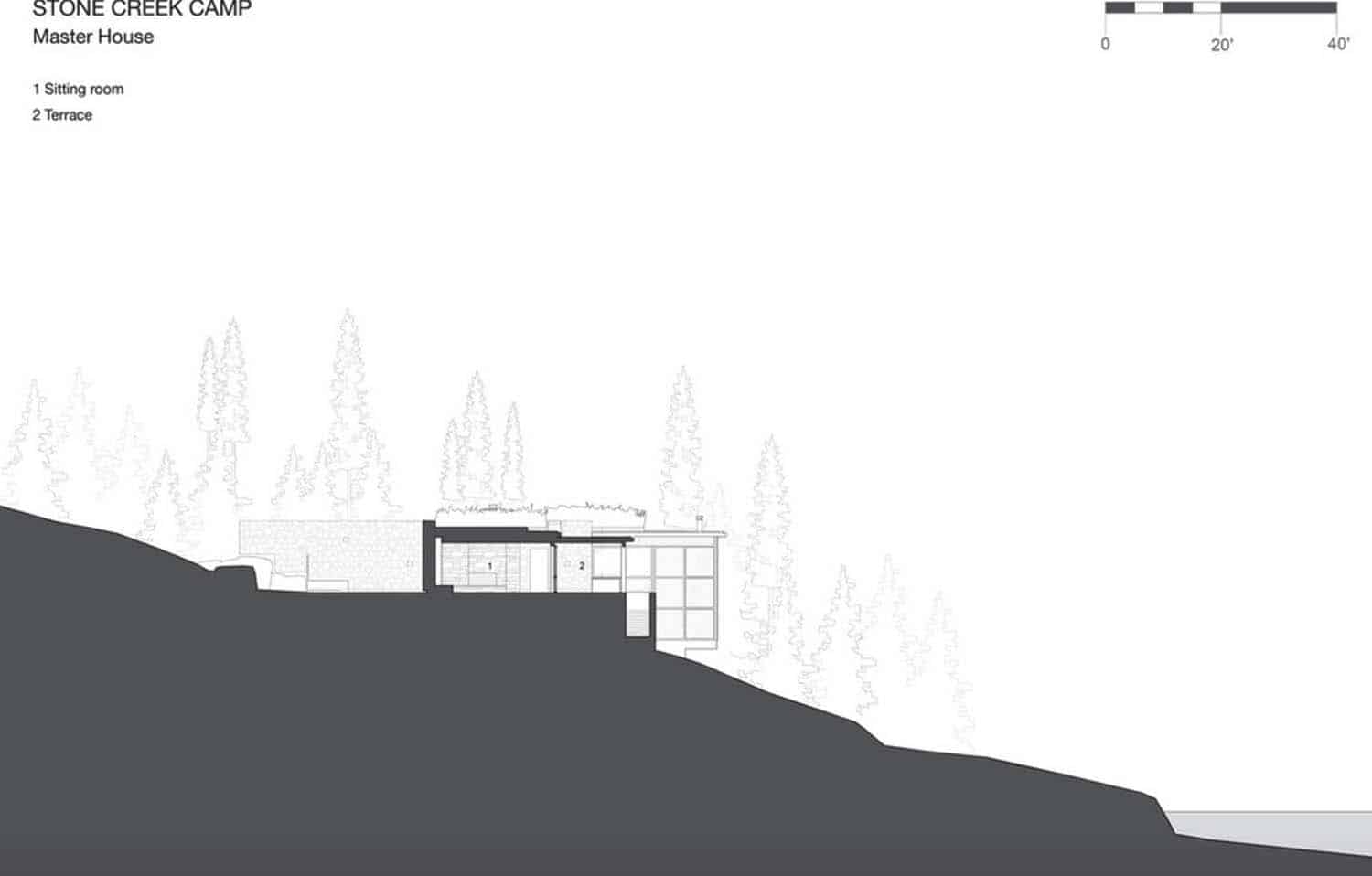
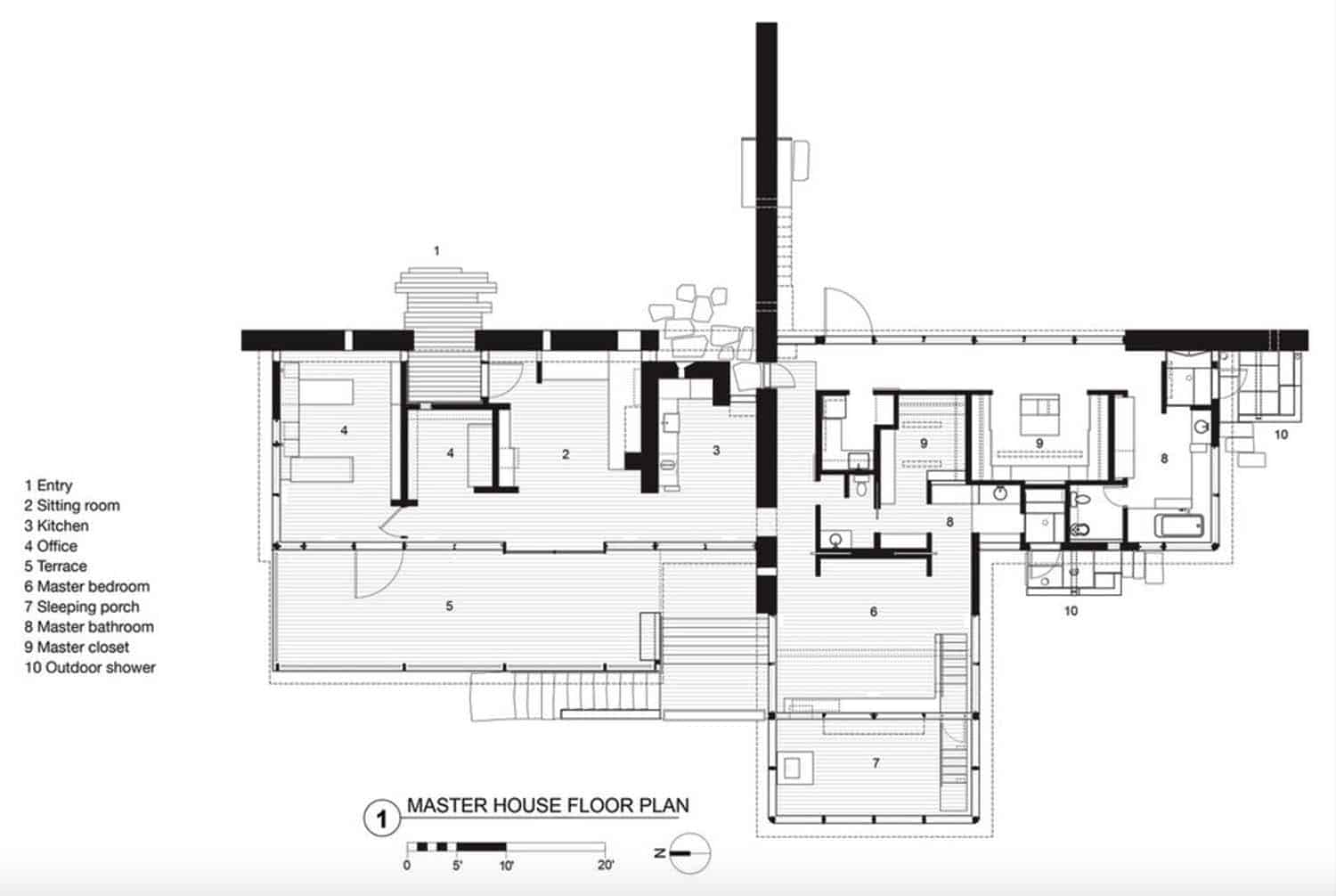

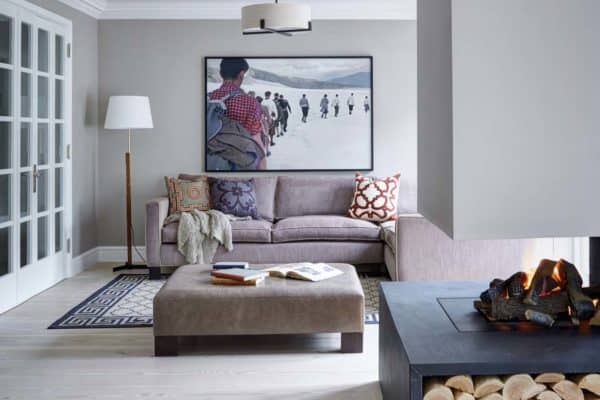

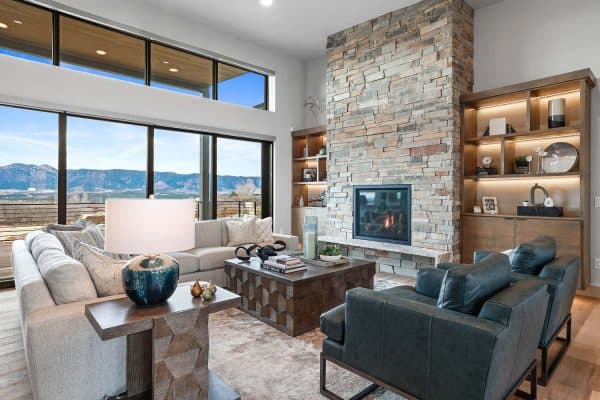
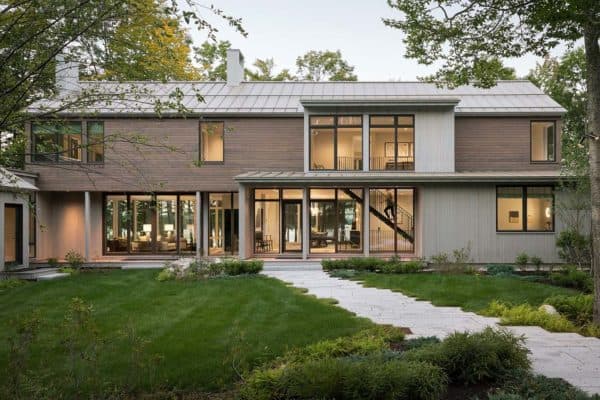

1 comment